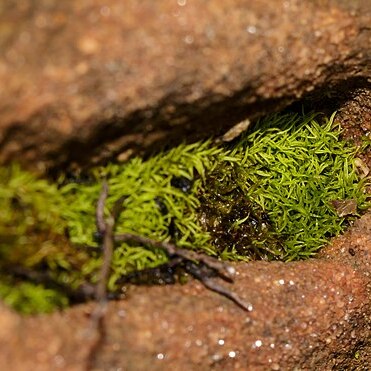Plants small to medium, loosely caespitose, green to yellow-green; terricolous, saxicolous or corticolous. Stems 2-20 mm tall, little branched; in section round, central strand present, cortical cells thin-walled, smaller, incrassate toward margin. Leaves incurved, contorted with inrolled margins dry, widespreading wet; oblong to oblong-lanceolate, 3-5 mm long; apex obtuse to broadly acute, mucronate; base scarcely differentiated to oval; margins plane to erect at apex, entire. Costa short-excurrent, ventral superficial cells quadrate, papillose, dorsal superficial cells linear, smooth; in section subround, ventrally flattened, guide cells 4, ventral stereid band strong, 2-3 cells thick, ventral surface cells similar to laminal cells, papillose, dorsal stereid band strong, 3-5 cells thick, dorsal surface cells not differentiated. Upper laminal cells quadrate to subquadrate, occasionally angular, thin-walled, superficially bulging, papillae low, mostly 4 over lumen; basal cells rectangular, hyaline, smooth, extending up margin, confined to lower 1/3 of leaf. Autoicous. Perigonia gemmate, on short lateral branches; perichaetia terminal, leaves not differentiated. Seta 7-12 mm long, yellowish; capsule cylindrical, 2-3 mm long, yellow-brown; peristome to 1 mm high, red-yellow, teeth filiform above very short basal membrane, twisted 2-3 turns counterclockwise, papillose; operculum rostrate; calyptra cucullate, covering upper 1/2 of capsule; spores round, 10-12 µm, papillose.

